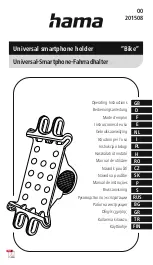
Page 114
01/2007
AMT/PTD/PBX/0020/2/4/EN
5.4.2 For a NeXspan 50 equipped with an FPHBG back plane as well
as CSH and LDS/LDT cards
The LDS/LDT card manages DECT synchronization by sending the 800ms time signal to DECT
base stations on the S0 interface (M bit multi-frame mechanism of the S interface).
LDS/LDT cards have two operating modes (configured via jumper CA1.1):
•
Master Mode
•
Slave Mode.
When there are several LDS/LDT cards in a NeXspan 50 equipped with FPHBG/CSH, the LDS/
LDT cards must be synchronized: an LDS (or LDT) card must be configured as "Master" and
provide the synchronization signal. Other cards are configured as "Slaves".
Hardware specifications
•
The PBX is equipped with a CSH card and an FPHBG back plane.
•
Only the LDS or LDT cards are used to connect base stations.
•
Clusters with LDS or LDT cards are equipped with FPD30 or FPT30 back planes.
Configuration
•
An LDS (or LDT) card is configured as Master (via jumper CA1.1). The LDS (or LDT) card
generates a clock from the synchronous bus clocks. This clock conforms with the one
specified for DECT synchronization. From this clock, the LDS (or LDT) card sends the DECT
time signal (M bit) to the S interfaces and physically provides three outgoing clocks in V11
differential pairs: SYN, SYNA and SYNB.
•
The other LDS (and/or LDT) cards on the device are configured as slaves. The LDS (and/or
LDT) cards use the clock received on the SYN pair and regenerate it on the two outbound
clocks, SYNA and SYNB.
In an NeXspan 50 (single-site or multi-site) with a single radio coverage, one LDS (or LDT)
card must be configured as master and the others as slaves.
•
If the DECT clock is cut off and both types of card, LDS and LDT, are used in the same
FPHBG/CSH device to connect DECT base stations, the LDT boards must be configured (via
the jumper CA1) in manual resynchronization mode.
Note:
If the LDT board is configured in automatic resynchronization mode (LDT boards in the
device only), it switches to resynchronization mode when a "phase skip" or "no signal"
error is detected. During this phase, the signal received is analyzed and, if correct for 50
seconds, the 800 ms counter is reset to the HRAD signal received. If the error continues
to be detected during the resynchonization phase, the 800 ms counter setting is not
adjusted.
Содержание NeXspan C
Страница 2: ...Page 2 01 2007 AMT PTD PBX 0020 2 4 EN...
Страница 20: ...Page 20 01 2007 AMT PTD PBX 0020 2 4 EN...
Страница 66: ...Page 66 01 2007 AMT PTD PBX 0020 2 4 EN...
Страница 70: ...Page 70 01 2007 AMT PTD PBX 0020 2 4 EN Figure 4 2 Bottom view of the LD4 ST card...
Страница 134: ...Page 134 01 2007 AMT PTD PBX 0020 2 4 EN...
Страница 160: ...Page 160 01 2007 AMT PTD PBX 0020 2 4 EN...
















































